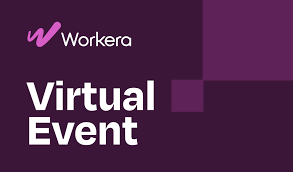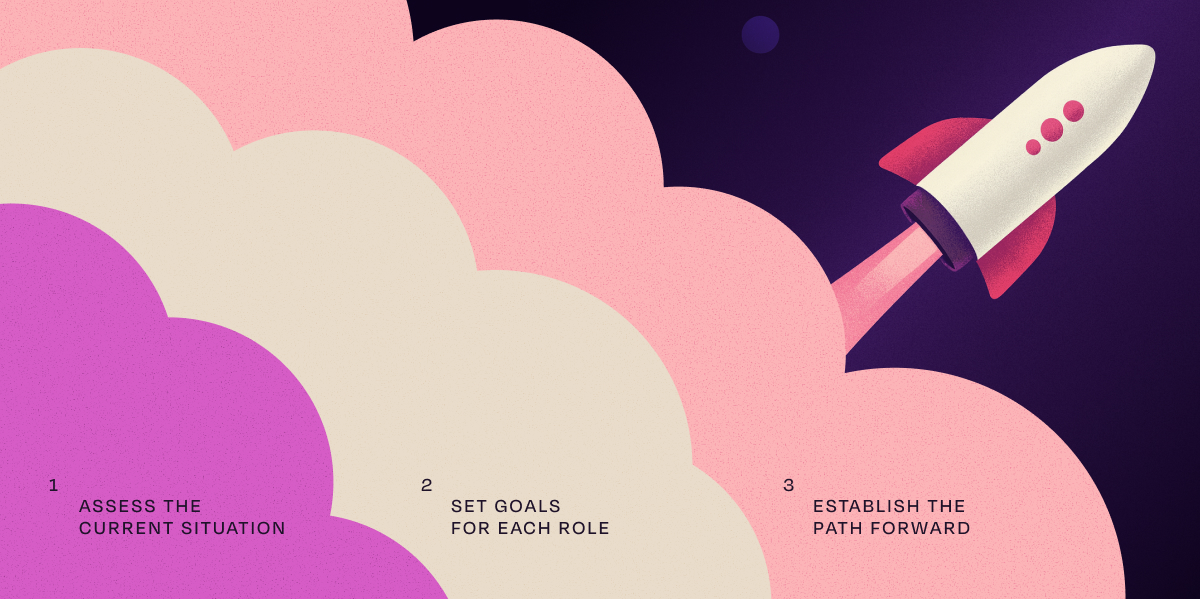Today’s executives are leading their businesses — and their employees — through a period of unprecedented technological change.
In 2020, the World Economic Forum predicted that AI technologies would disrupt 85 million jobs on a global scale by 2025. The same report expected 44% of worker’s skills to be disrupted, leading to the increased need for employees to shift career paths and adopt new skills in their existing roles. Since the sudden emergence of generative AI, we can only imagine that these predictions were too conservative — more employees and more skills will need to adapt in response to tools like ChatGPT and GitHub Copilot.
Many organizations and business leaders recognize the need to upskill, reskill or rightskill their employees. Upskilling sees employees enhance their abilities to remain relevant in a current role, while reskilling requires team members to acquire new skills when their existing role becomes obsolete. With rightskilling, an employee acquires the precise skills they need for a role — an essential approach given the pace of change and our limited time and resources.
Regardless of whether your organization needs to upskill or reskill, it’s important to understand that these processes don’t take place in a vacuum. To help your employees succeed and drive innovation, you need to understand where you’re coming from and where you’re going — you need to be able to measure progress.
In the first article of this series, I looked at the most important factors and attributes that define skills-based organizations. In this article, I’ll explain why measurement is essential to ensure long-term success for an organization and its employees.
Companies can choose from a wide range of measurement instruments to assess their employees’ skill levels and track progress, but not all measurements are created equal. When choosing which measurement instruments to use and in what order, organizations must bear in mind a few key factors.
Exploring the range of measurement instruments
Measurement instruments each vary according to a number of factors: how and when the assessment is deployed; how much friction it demands of the person being assessed; how much detail and granularity the assessment provides; and how much the data is shaped by human involvement and inherent biases. There is no such thing as a perfect or imperfect measurement instrument — instead, it helps to look at these tools on a spectrum ranging from those with lower validity and granularity to those offering higher validity and granularity.
Assessments involving human evaluation are low-friction, but they are prone to biases and can lead to inaccuracies. Data indicates that 42% of learners overestimate their abilities by 20% or more, while 56% of learners underestimate their proficiency by a similar degree — the key takeaway here is that the vast majority of people will be significantly off target when asked to assess their own skills. To make matters worse, these tendencies are strongly influenced by cultural factors, meaning that the consequences of bias are amplified when employees are asked to evaluate their abilities.
Static documents like resumes and LinkedIn profiles give organizations and interviewers the chance to see a snapshot of a person’s skills or abilities, but it provides little granularity in terms of the level of proficiency. Engineers may commonly list “system design” as a skill on their resume, but a head of engineering would not have the necessary detail to entrust the design of their codebase architecture without digging in further on that person’s experience and ability.
To truly assess a person’s abilities and follow their progress, observational approaches in the flow of work appear to offer an appealing trade-off between granularity and friction. Business leaders can see how an employee’s skills are developing without taking them out of the routine of their daily work. However, these methods are limited in terms of both accuracy and their applicability to a select range of tasks. An engineering leader may choose to track GitHub activities, but a significant portion of GitHub code is often copy-pasted, leading to unreliable data. Flow-of-work measurements also fail to predict an employee’s potential for tasks that they haven’t yet undertaken.
Computer adaptive assessments are the gold standard for accuracy and validity, allowing organizations to measure and benchmark for thousands of highly granular skills. The trade-off here is with friction: you can’t ask employees to undertake these assessments on a daily basis. Maximizing the insights from computer adaptive assessments requires an organization to administer them at a reasonable, manageable frequency — allowing them to track progress without hindering the employee’s actual productivity and performance.
The right approach to measurement instruments
To put the challenge simply: high-granularity assessments are more cumbersome to administer and can only be used infrequently; less accurate assessments also offer less friction to the person being assessed, meaning they can be administered far more often.
The key to making the most out of each of these tools is in deploying them in the right order. The most productive approach is to begin with computerized adaptive testing, the gold standard in terms of both accuracy and granularity. Not only does this allow an organization to get a valid understanding of employee skills and proficiencies upfront, but it also gives them a far more vivid picture of where that employee could and should grow in the months to come.
Once a skills-based organization has established a roadmap for their employee’s development (upskilling, reskilling or otherwise), they can then measure progress with lower friction instruments. These tools may not give you granular detail into how each skill is progressing on a daily basis, but they will allow an organization to track the general arc of an employee’s growth and evolution.
Risks and rewards
What is the cost of ignoring skills development? In the current technology environment, with new AI tools emerging on a monthly and even weekly basis, companies that don’t swim together with the tide will soon find themselves far behind the competition. Rightskilling isn’t just a matter of improving your workforce — it’s a matter of keeping pace with the industry itself.
Skills-based organizations — those that tailor talent decisions and skills development strategies to the abilities of each employee — need to have an effective approach to measurement in order to maximize progress. By quantifying business goals in terms of skills, mapping and measuring each employee’s abilities according to those skills, and taking action based on the resulting data points, businesses can put themselves in the best position to take advantage of the next wave of AI tools.
Workera’s skills ontology provides businesses with an unprecedented depth of understanding and level of granularity for skills assessment. Contact us to learn more about how your organization can establish skills benchmarks and design the most effective strategies for rightskilling your workforce.
Bibliography: Russo, A, Recession and Automation Changes Our Future of Work, But There are Jobs Coming, Report Says, World Economic Forum



.jpg)


